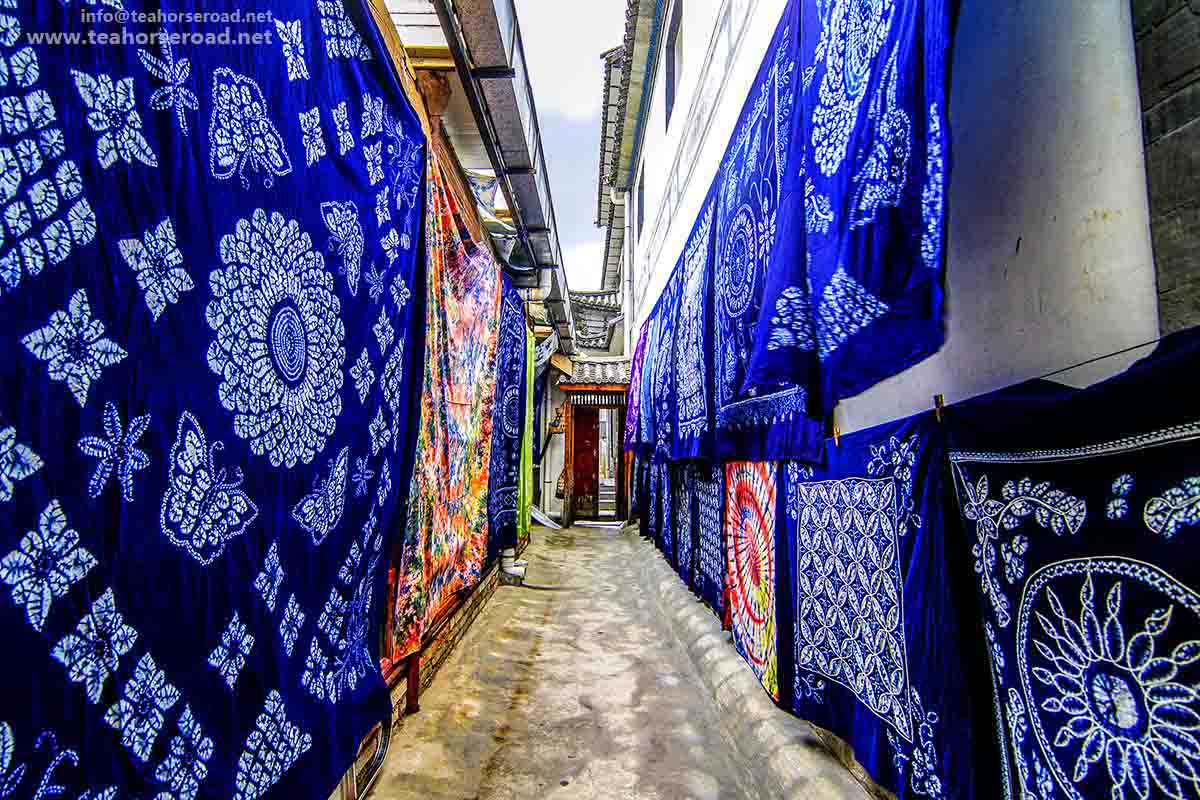Tie-dyeing is a traditional and unique dying process in China , which has existed on the time of the Ancient Tea Horse Road . A dying method in which the fabric is partially tied up during dying so that it cannot be colored . It is one of the traditional Chinese manual dying techniques . The process is stitched by hand needles and dyed repeatedly with plant dyes . The products are not only bright in color and never fade , but also have anti-inflammatory and health effects on the skin and overcome the side effects of modern chemical dyes harmful to human health .
Traditional dyes are mainly Radix Isatidis and Indigo . Compared with chemical dyes , its color is natural , fades more slowly , does not damage the fabric , is durable , and is more comfortable to wear , and does not cause adverse irritation to human skin . Today , when returning to nature and advocating health care , tie-dyed fabrics are widely used to make clothes , quilts , pillow towels , tablecloths and other products that are intimate with human skin , and they are particularly popular .
The tie-dyeing process is divided into two parts : tie-dyeing and dying . It uses yarn , thread , rope and other tools to bind , sew , tie , tie , and clip the fabric and then dye it . The characteristic of the process is a printing and dying technique in which the printed fabric is twisted into knots with threads , and then printed and dyed , and then the twisted threads are removed . It has more than one hundred different techniques , each with its own characteristics . For example , the ” roll up twist ” is rich in color , natural changes , and endless fun .This unique artistic effect is difficult to achieve by the mechanical printing and dying process .






